How To Improve Concentration And Memory While Studying | How To Increase Concentration
Jump To:
Hard at doing well with exams? Are concentration, focus, and memory an issue? Don’t worry, here are some very useful daily activities and tips that tell you how to improve concentration and memory. Increase the reception levels and get through the exams fulfilling the purpose of it, how to increase concentration. By practicing certain things daily, here’s how to increase concentration while studying. Check out yoga asanas for all.
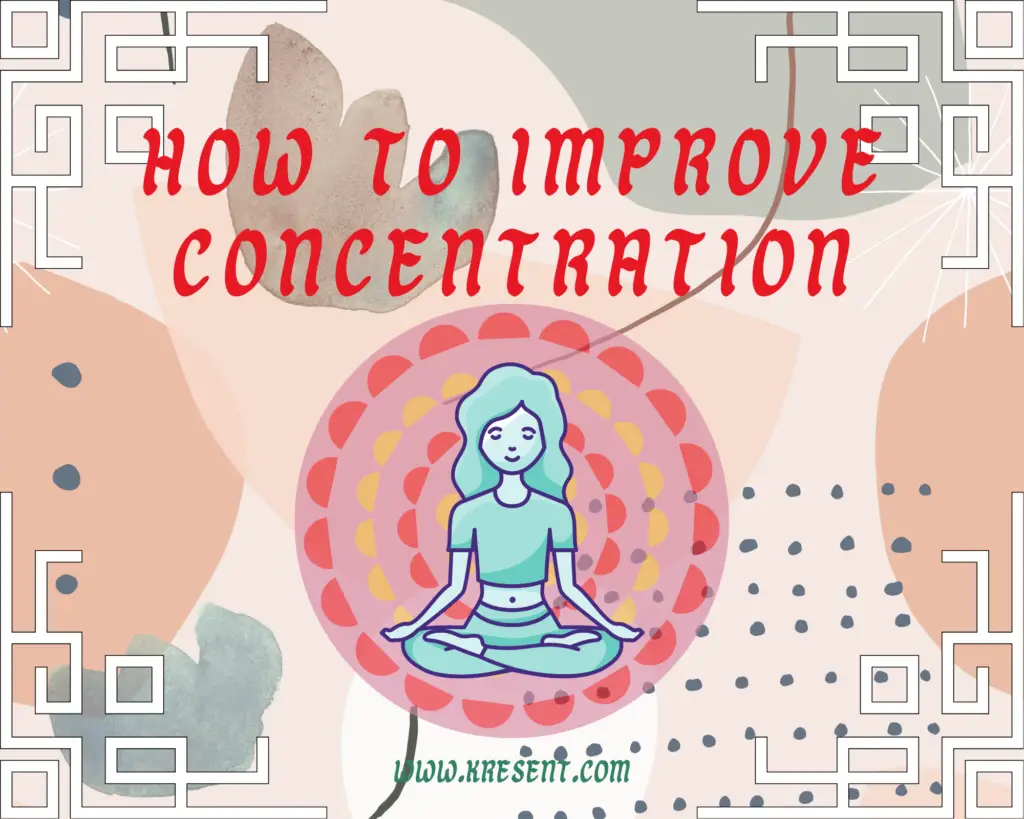
- Interest in the subject.
- Yoga and meditation for long periods of concentration and memory. You’ll see basic asanas in this post, once you perfect these asanas, you can go for some fun yoga for students and some more yoga for concentration and focus.
- How foods that you take in, can impact your mind and body and what is a healthy diet.
- Rest, reduce exam anxiety with yoga nidra. Yoga Nidra helps you relax completely and can effectively reduce your sleeping hours. This, in turn, gives you more time to accomplish more. Here are some more tips on how to wake up early and not feel tired.
- Techniques like Pomodoro
Multi-tasking (trying to do more than one thing at a time), loud noises, and visual stimulation (such as from a T.V.) make concentration much more difficult, and being around them or doing them too much can put you into a habit of non-attention which can be hard to break.
1. How To Create Interest And Concentrate In Studies For School Students:
The first thing is how much the subject interests you. Some subjects really bore us. Without interest in the subject or topic, it is hard to even listen to or read through it.
You need to think of the subject application-wise. From the result, where did it all start? will generate interest.
I know! Application wise?! with an uninterested subject… I faced it too.
It is hard getting backward in the process on the application level in an uninterested subject. It takes a lot of imagination to do so. Try going backward on the topic level or at an answer level.
Start analyzing how the result is approached with one previous step at a time. You generate interest, thinking of what lead to this step in every step of the process and you’ll know it.
I personally tried this reverse engineering process and it worked for me. This way your interest in the subject builds up automatically.
In the process, you’ll find:
- Logical assumptions and conclusions.
- Relevant formulas.
- Laws pertaining to the application. etc..
To be in the process of learning, you’ll need concentration. For some, the interest in the subject works completely, and for others to a certain level.
Long periods of concentration require the ability to focus for that long. Here comes the importance of meditation / pranayama. The pranayama helps you calm your mind of all nonsense and focus on what you want to do.
2. Why Yoga And Meditation To Improve Concentration:
Yoga and meditation/pranayama are not just some elderly practices that are done after you reach your 60s for your pastime. Our body needs yoga and meditation to keep in condition and work for us.
Parents should introduce yoga and meditation practices as early as possible in their lives. It should be as playing in the ground with joy. Daily yoga and meditation must be practiced, to enhance your perception and get rid of stress, anxiety. This is how to improve concentration, which is the best method to get good results.
Meditation leads to structural changes in the brain – this has been researched and studied only to confirm that the brain has the ability to modify itself if it’s trained in the right manner. A study in 2012 from UCLA found that consistent meditation helps in strengthening the connections between brain cells and a change in brain tissue so that it “folds” more. This facilitates processing information quickly, thus increasing the memory and our attention span.
Go slow with yoga when you start doing. The key is to progress into the posture by experiencing the changes in how your body and mind feel.
Yoga and meditation/pranayama will make sure your body is at ease and you can perform your activities with less friction.
Yoga For Concentration And Memory
Here’s how to improve concentration and focus. Exercises to improve concentration are very essential. Without much of various asanas, you can practice Surya Namaskar daily to start with. As I said before doing it right is more important than getting into the posture. Find out more on how to do surya namaskar correctly and check if you’re doing it right.
There is some exciting yoga for students, but here is some easy daily yoga to get used to and feel the change with yoga for beginners. After you’re through with the following simple asanas you can practice some daily yoga for concentration and focus.
Tadasana (Standing Pose) For Concentration:
This pose stretches the whole foot, especially the arch. It engages the thighs, activates the calf muscles, and strengthens the knees.
It stretches and lengthens all the long muscles of the body, while also opening the spinal, shoulder, and hip joints.
This pose strengthens the muscles of the neck, lower back, abdomen, and pelvis. Lung capacity increases and the respiratory muscles become firmer. Regular practice of this asana not only strengthens the body but also makes it flexible.
Tadasana looks like simple standing but there is a particular way to set every part of the body in the asana. Let’s get into the detailed steps of Tadasana.
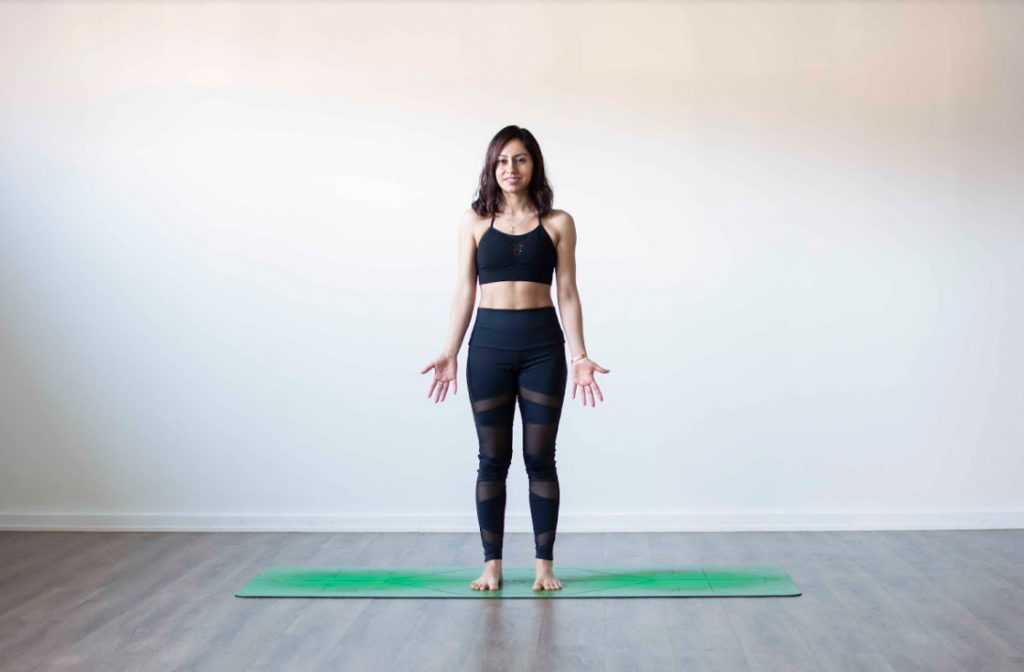
Tadasana Steps:
At first, practice the tadasana with standing against the wall to maintain the correct posture, with hips towards the wall and the ankles a few inches away from it.
- Stand with the feet hip distance apart grounding the feet. Lift the energy from the ground up towards the torso.
- Gently extend the spine maintaining the natural curve, by tucking the tailbone down towards the earth and the pelvis in towards the body.
- Roll the shoulders up towards the ears and drop them down towards the hips. Focus on the breath.
- Inhale; raise the arms up towards the sides, with the shoulders touching the wall, and the palms facing forwards, stretching and extending the torso.
- Exhale; bring the arms down. Repeat 5 to 10 times; relax.
- Inhale; raise both the arms up towards the ceiling with the palms parallel, make sure the shoulders are pressing down towards the hips.
- Exhale; bring the arms down towards the body. Repeat 5 to 10 times; relax.
Ustrasana (Camel Pose) To Relieve Stress For Better Concentration
Backbends are very good for relieving stress. Students experience stress with long hours of sitting while studying. The camel pose relieves the pain in the lower back. With regular practice, Ustrasana helps you strengthen your back and shoulders and help you concentrate better.
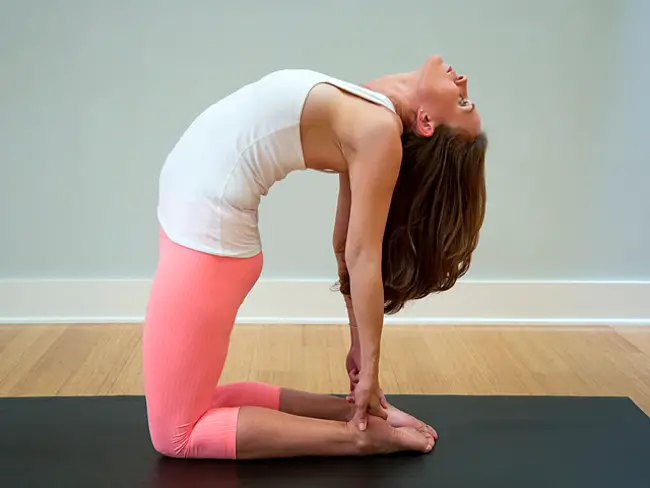
Ustrasana Steps:
- Kneel on the yoga mat and place your hands on the hips. (You may place a cushion below your knees to ease your way into the pose.)
- Your knees should be in line with the shoulders and the sole of your feet should be facing the ceiling.
- Inhale; draw in your tailbone towards the pubis as if being pulled from the navel.
- Simultaneously, arch your back and slide your palms over your feet till the arms are straight.
- Do not strain or flex your neck but keep it in a neutral position.
- Stay in this posture for a couple of breaths.
- Exhale; slowly come back to the initial pose. Withdraw your hands and bring them back to your hips as you straighten up.
Pranayama For Concentration
To channel prana and control the mind, we have to transform the activity of the body, breath, and senses to perform activities as we want.

Meditation is the most powerful of all concentration enhancement techniques if you’re looking for how to improve concentration. Learn a few simple meditation techniques and practice them at least five minutes daily such as ujjayi pranayama, kapalbhati pranayama, and bhastrika pranayama.
Trataka (Concentrated Gazing)
This is a cleansing technique of yoga for concentration and focus to clear eyes and mind. Healthy eyes are the first thing to look at. Because weak eyes or eyesight constitute many problems such as headaches, eye pain, distraction due to stress in the eyes, etc…
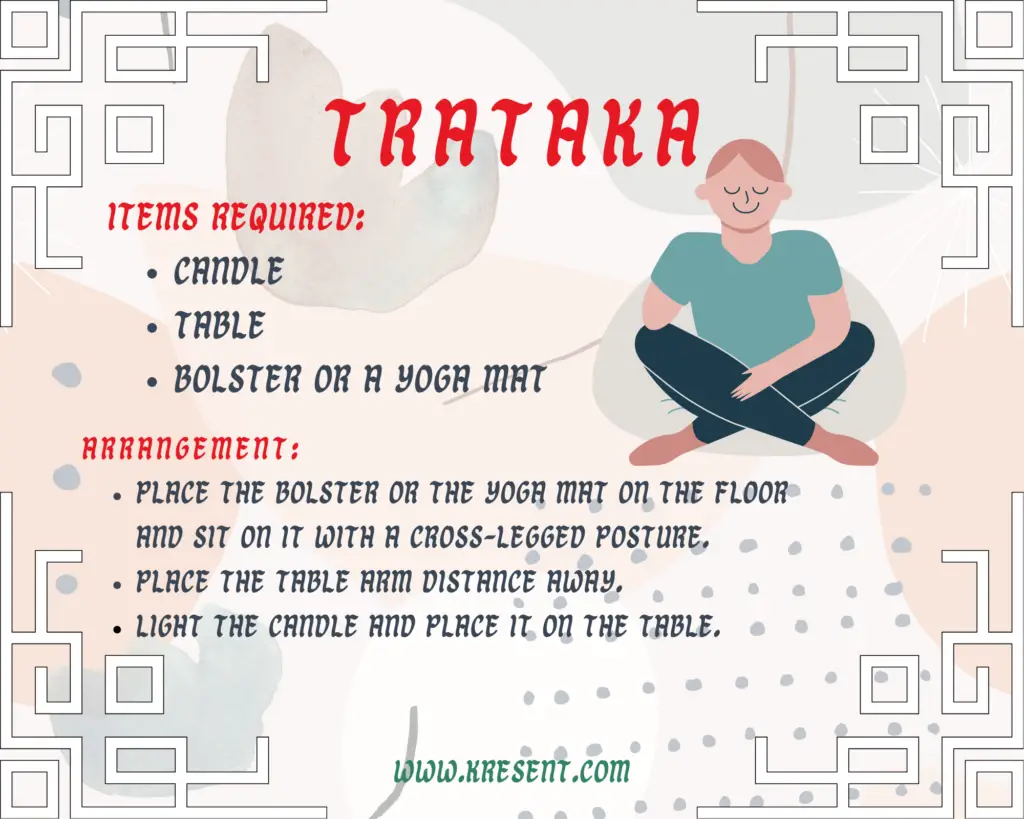
Items Required:
- Candle
- Table
- Bolster or a yoga mat
Arrangement:
- Place the bolster or the yoga mat on the floor and sit on it with a cross-legged posture.
- Place the table arm distance away.
- Light the candle and place it on the table.
Procedure:
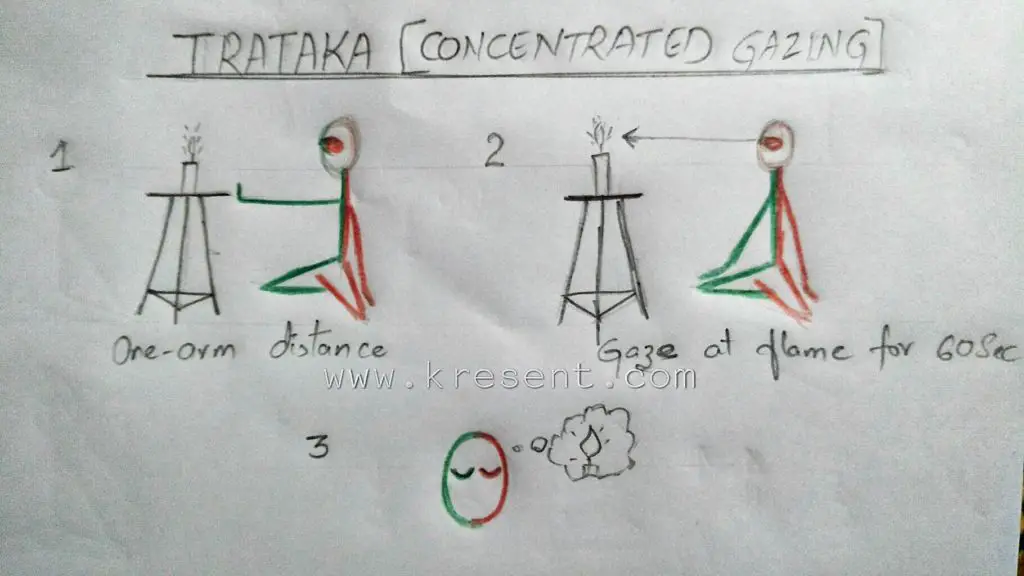
- Focus on your breath and gaze at the flame without blinking as much as possible.
- Gradually increase the gaze at the flame without blinking to 60 seconds.
- Close your eyes and visualize the flame at the point between the eyebrows.
- Steps 1 and 3 are a cycle, repeat the cycle two more times.
- After three cycles are completed, sit with eyes closed and focus on breath till it gets normal.
Benefits:
When Practiced regularly, this technique enhances single point focus.
Precautions:
Not suitable for people with psychic problems.
3. Healthy Food For Peaceful Mind To Concentrate Better:
Take a food break rather than eat with a book in hand or while working at your desk because that’s likely to lead to mindless eating in an inappropriate quantity
With junk food, antibiotics, irregular eating patterns, and stress, our bodies are being set up for a sluggish digestive system, which in turn slows down the rest of your bodily processes.
You are what you eat!
Avoid food with too much spice or sugar and reduce the intake of fried and junk food. Include more fresh fruits and vegetables, juices, and salads in your diet.
Foods That Improve Memory | Brain Boosting Diet
Some of the foods your brain benefits from are:
Nuts
Almonds have vitamin E and magnesium; walnuts have manganese and copper.
Just eat 15-20g of plain nuts a day (a handful), preferably soaked, to reduce phytic acid and not more. Eating more nuts may increase phytic acid production and cause serious gastric issues.
Fruits
Fruits are rich in natural sugars and have fiber. They have vitamins, minerals, and antioxidants that boost immunity and help in all our body functions.
- Bananas
- Dates
- Currants
- Figs
- Olives
- Grapes
Vegetables
- Lettuce
- Parsley
- Garlic
- Avocado
- Carrots
- Cucumber
- Tomatoes,
- Plums
- Asparagus
- Radish
- Broccoli
- Lemon
- Sprouts.
You can also check these 7 nourishing brain foods.
Few More Brain Boosting Foods
- Omega 3 rich foods such as fatty fish could boost mental capacity and memory. Though it is tiny, the flaxseed is mighty, packed with powerful brain boosting supplements, omega 3 fatty acids, vitamins, and minerals.
- Yogurt to prevent memory loss in the long term. A diet rich in yogurt can prevent loss of memory. This is because yogurt is rich in B12 vitamins. B12 stops the brain from “shrinking” with the onset of old age.
- Blueberries are packed with anti-oxidants that age-proof your brain, preventing the onset of diseases. Anti-oxidants function as scavengers in the body, clearing away harmful free radicals that cause deterioration and aging. These are believed to stimulate the flow of blood and oxygen to the brain, keeping the mind fresh.
- A cup of milk with unsweetened cereal every morning will give you at least 25 percent of your daily intake of Vitamin D, a nutrient that has been shown to affect your brain’s inflammatory response, keeping your mood swings in check and your temperament on an even keel.
- Don’t forget to drink enough water. It is essential to keep the brain and body working. It hydrates, reduces stress and keeps one healthy.
- Herbal tea and green tea are good substitutes for caffeine as it relaxes the brain and induces mental alertness. Caffeine is a stimulant and too much of it can induce a feeling of edginess and nervousness.
- Juices too make great brain food just like fruits and vegetables, besides the hydration benefit.
4. Effective Study Tips During Exams | How To Improve Concentration:
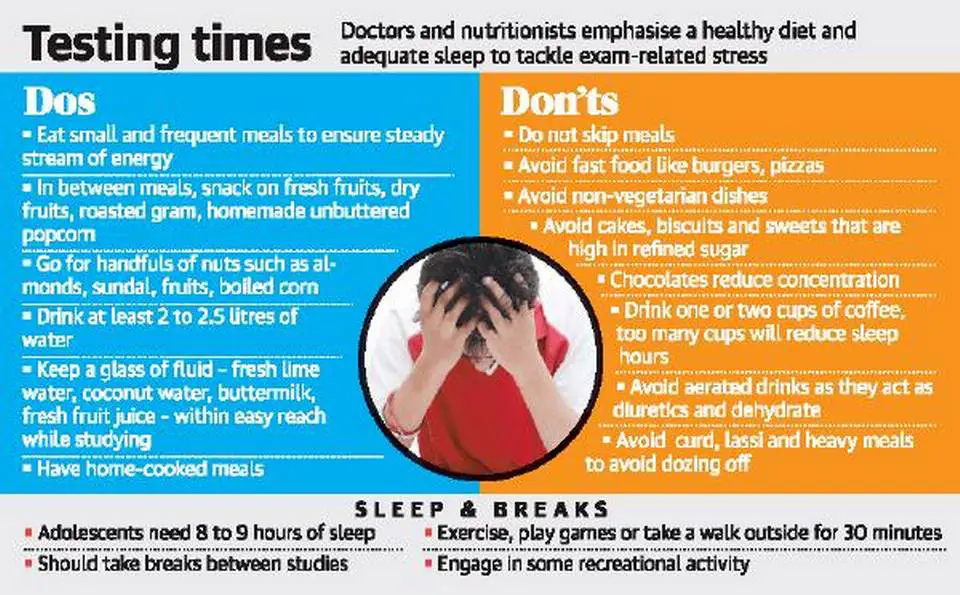
Here are some effective study tips for you to be active with ease and concentrate at your best.
Start with a healthy and simple homemade breakfast, preferring idli to Pongal and vada or a bowl of multi-grain porridge with fruits, nuts, or banana milkshake, an egg scrambled and wrapped in a chapati, or a multi-grain sandwich.
It is better to have home-cooked meals. Avoid skipping meals or eating out. Sipping one or two cups of coffee could help in concentration but more than that, it will dehydrate, make one sluggish and reduce sleep hours.
Lakshmi Vijayakumar, psychiatrist and founder of SNEHA, said, excessive stress is not good. “A certain amount of stress is good. But excessive stress will diminish capacity, cognition, memory, and performance. It will result in a lack of sleep, leading to poor concentration and loss of ability to remember,” she said. All reading should be completed 15 days or a month before the examination, she said.
Take Enough Rest To Improve Concentration And Memory:
Your brain may just need a break. Studies suggest that sleep has a huge impact on learning and memory. This is why a person who suffers from sleep deprivation has trouble concentrating and focusing on the tasks at hand. Tip: Next time you feel like you’re losing concentration, take a short nap.
It was important to take breaks in between studies, he observed. “Exercise or play games. In fact, watching television for some time is not a bad option. It is important to keep stress away by doing something other than academics,” he said.
- When you lose sleep, it’s harder to focus and pay attention. This affects school performance and job productivity.
- Lack of sleep slows your reaction time
- sleep feeds creativity, synthesizes new ideas, and leads you to “ah-ha” moments. Research shows that we need good sleep to feed our high-level, innovative thinking and problem-solving abilities.
- As you sleep, memories are reactivated, connections between brain cells are strengthened, and information is transferred from short to long-term. Without enough quality sleep, we can become more forgetful. Studies suggest that sleeping shortly after we learn new information helps us retain and recall that information later.
5. Pomodoro Technique
Research says that sitting for too long is not good for you. In fact, they say sitting is the new smoking. Yes, sitting in one position for too long, especially for more than an hour can be very unhealthy. It causes physical and mental inertia. When you take a break every hour, you actually recharge your mental faculties and facilitate blood circulation in your legs and brain.
Each work session (called a Pomodoro) is typically 25 minutes long, and the short and long breaks usually last 5 and 20 minutes respectively.
The Pomodoro technique was proposed by Francesco Cirillo in the 1980s to minimize distractions that affect the workflow of workers, thus reducing their productivity.
This refers to a time management technique used to increase the productivity of people at work. It involves the breaking up of work into a number of sessions with sufficient short and long breaks in between the sessions for adequate rest.
Take Away
Try and start working with the simple steps such as:
- How to concentrate while studying; by dealing differently with the concepts.
- A simple tadasana, yoga for concentration (when done correctly, you can feel that your body is much more alert than before)
- Trataka, pranayama for concentration (makes you look at things clearer),
- Simple food changes during examination time that act as supplements to improve concentration.
- Sufficient rest to revive your brain to focus and concentrate better.
Finally, the Pomodoro technique to manage your time through windowed concentration.
Does yoga help concentration?
You’re aware of the benefits of yoga for fitness, but practitioners also use yoga for concentration—it’s been shown to improve focus, attention, and memory. … Researchers have found that yoga can greatly affect neural patterns in the brain, which can improve your ability to concentrate and focus.
How does yoga sharpen concentration?
Yoga and other forms of moving meditation integrate physical movement with breath awareness and focused attention.
Which Mudra is good for concentration?
The intention of the Gyan mudra is to improve your concentration and sharpen your memory. This is a great mudra to use when seeking to gain knowledge. Try holding this mudra while meditating for insight into your life or a specific issue.
How long is trataka?
Going through all the steps of tratak should last 10 to 30 minutes
Can you blink during Tratak?
‘Trataka’ otherwise known as ‘yogic gazing’, is an ancient meditation practice, that also serves as a ‘kriya’, or cleansing process, of the eyes.
In bahiranga trataka you gaze steadily at a single object without blinking, until the eyes sting or begin to water.
Should we wash eyes after Tratak?
Palming or cupping the eyes is practiced after completing the practice of Trataka. However, it is recommended to wash the eyes by taking drinking water (room temperature) in one palm and dipping the eye into it for a few seconds.
Is Tratak good for students?
There are various types of Tratak Sadhanas. The one most suitable for students is Madhya Trataka in which we concentrate on the flame of a candle or lamp.
How can I increase my concentration level?
There’s no one answer for how to improve focus, but the following tips can help.
- Eliminate distractions.
- Reduce multitasking.
- Practice mindfulness and meditation.
- Get more sleep.
- Choose to focus on the moment.
- Take a short break.
- Connect with nature.
- Train your brain.
How can I focus on studying?
How to Stay Focused While Studying
- Create a suitable study environment.
- Set clear, precise goals.
- Create a study schedule.
- Along with a study ‘ritual’
- Don’t forget: Share your study schedule with friends and family.
- Block out all possible distractions.
- Try the Pomodoro Technique.
How can I increase my focus naturally?
Train your brain.
- Playing certain types of games can help you get better at concentrating. Get your game on. Brain games may not be the only type of game that can help improve concentration.
- Improve sleep.
- Make time for exercise.
- Spend time in nature.
- Give meditation a try.
- Take a break.
- Listen to music.
How can I focus on myself?
Over time, you might begin feeling drained even a little lost. Focusing on yourself isn’t selfish.
To get started with self-care:
- Make time for physical activity.
- Add mood-boosting foods to your diet.
- Give meditation a try.
- Write or draw in a mood journal.
- Read a book.
- Aim to spend 2 hours in nature each week.
How many hours should I study?
So, for example, if your course is three hours long two days per week, you should be studying 12-18 hours for that class per week. If your class is an hour-long once a week, you need to study that material 2-3 hours per day. Many experts say the best students spend between 50-60 hours studying per week.
Why can I not concentrate?
Being unable to concentrate can be the result of a chronic condition, including: alcohol use disorder. attention deficit hyperactivity disorder (ADHD) chronic fatigue syndrome.
Which is the best time to study?
Most of the students prefer to study in the early morning, generally from 4 or 5 AM in the morning as the brain is more likely to concentrate. It could be the best option for students who have more stamina early in the day.

Very helpful
Hey Anushka, thanks for the feedback. I’m glad kresent helped.
very good advice for any body
Thanks for the feedback, Sachin. Good to know the tips helped.